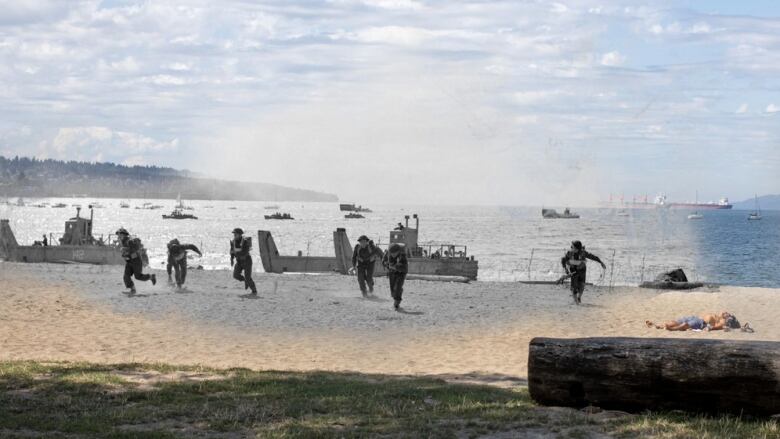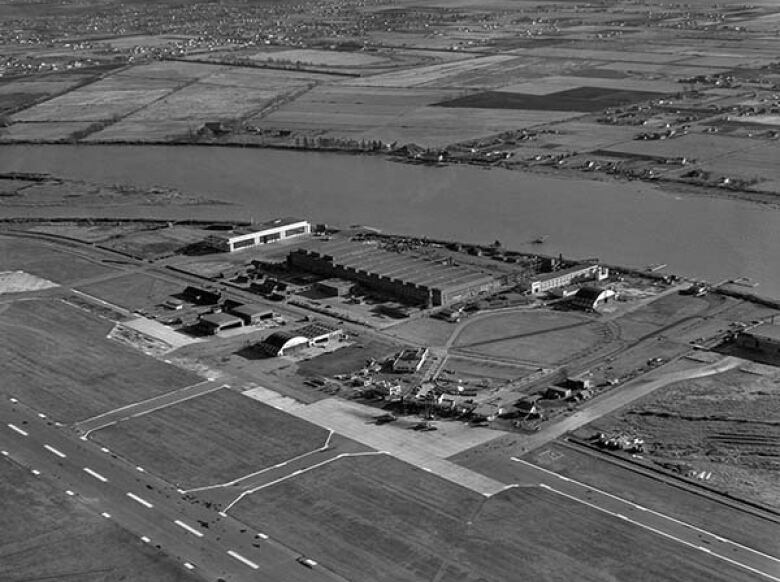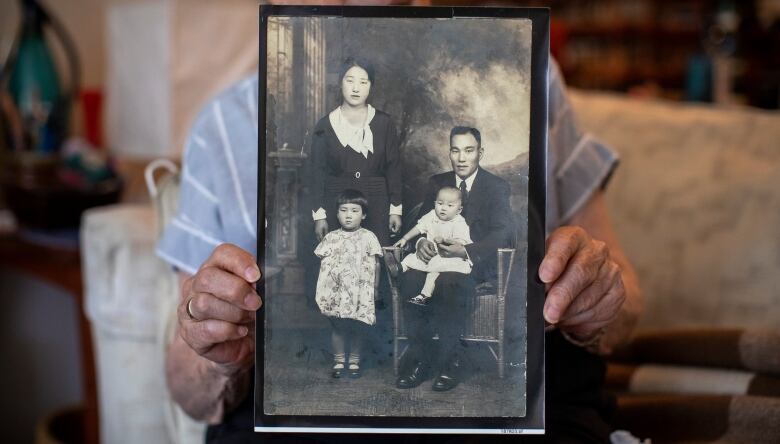Then and now: How Metro Vancouver has changed since Canada entered WWII 80 years ago
Historian says war years show how people grapple with crisis

Eighty years ago, on Sept. 10, 1939, Canada officially entered the Second World War.
Vancouver and the Lower Mainland, like the rest of the country, were fully mobilized and in many ways physically transformed.
"It was a tremendously complex era," historian and author Michael Kluckner said. "Vancouver ... to a degree, came of age."
The war years remain relevant, he said, because they illustrate how people decades ago reacted to what was the defining crisis of their time.

"You can't help looking around and wondering what it was like on the ground to be here and how did people respond," Kluckner asked.
People flocked to North Vancouver and Richmond to fill crucial jobs building ships and planes.
They accepted Vancouver becoming a defended city as concerns over possible naval attacks grew.
But the war years also saw fear and racism lead to the uprooting of entire communities who had everything taken from them.

Kluckner says the war years also marked the "swan song of industrial Vancouver."
Like the rest of North America, postwar prosperity meant the embrace of suburban housing and the automobile and the decline of public transit.
Here are five locations that looked very different as Canada went to war:
North Vancouver
Burrard Dry Dockin North Vancouverwas a major builder of Allied supply ships.
German submarine attacks created a great need for replacement cargo vessels to keep Britain supplied.
Once an industrial mainstay, the waterfront of North Vancouver's Lonsdale area now attracts more tourists than riveters. Watch as the waterfront transforms from 2019 to 1944as the camera looks down Pier No. 3 where the blacksmith shop was to left and the machine shop to the right:
Credit: Ben Nelms/CBC, North Vancouver Museum & Archives
The Lonsdale yards became the Lower Mainland's biggest employer with more than 14,000 workers, including Canadians from the Prairies, new immigrants and women.
"The workforce was transformed," said Karen Dearlove, curator of the North Vancouver Museum and Archives. "It created that really industrial waterfront that defined North Vancouver for 50 years."
A new public space on North Vancouver's waterfront has been designed to evoke the machine shop of the old Burrard Dry Dock. Watch as the new form compares and contrasts with the old:
Credit: Ben Nelms/CBC, North Vancouver Museum & Archives
Burrard Dry Dock was in business until the early 1990s. Its closure left many abandoned industrial buildings, later torn down.
Some new waterfront buildings have attempted to evoke the old worksites.
The pipe shop on the North Vancouver waterfront was built in the 1940s and still stands today. The Burrard Dry Dock was a massive employer at the time.Aphotofrom 1957shows workers walking past the building:
Credit: Ben Nelms/CBC, Jack Cash/North Vancouver Museum & Archives
Sea Island
Sea Island in Richmond was home to a Boeing factory for PBY Catalinas: seaplanes that servedas scout, search and rescue and anti-submarine craft.
"It was kind of an ugly duckling," explained Jack Nellist, who, at 16, worked there as a draftsman. "It was an ancient aircraft, actually, but it was ideal."
Harbour Air currently occupies the last vestiges of the Boeing plant built in the 1940s. Watch as a PBY Catalina, built at the factory, appears on the tarmac of yesteryear:
Credit: Ben Nelms/CBC, Harbour Air
The plant's workforce grew to more than 7,000 and led Boeing to build an entire housing development on the island called Burkeville, which still stands.
Mere days after Japan surrendered in August1945, Boeing abruptly shut down the plant.
See Burkeville as it looks today and back then:
"I thought that was pretty poor. They just suddenly cut us off," Nellist recounted.
Only a tiny portion of the factory still exists.

Kitsilano Beach
Lower Mainland beaches and parks were commandeered as bases, shore defences and anti-aircraft batteries.
Kitsilano Beach, on May 1, 1943, became a battlefield for amphibious assault training.
While the Kitsilano Beach of 2019 is often invaded by sunbathers, on May 1, 1943, soldiers stormed the beach as part of a war game:
Credit: Ben Nelms/CBC; City of Vancouver, AM1184-S1-: CVA 1184-3497, Jack Lindsay
Contemporary reports and photos tell of landing ships unloading troops and armoured vehicles onto the beach while heavy guns fire deafening blanks.
"Even the uninitiated could easily visualize the slaughter and chaos that would have resulted among the invaders if the shore defences had been firing real shells," Bill Fletcher of the Vancouver News-Herald wrote.

Other parks that took on military roles were Ambleside Park in West Vancouver, which was the site of significant anti-aircraft defences, and Stanley Park, where shore guns were stationed.
Point Grey
Another piece of Vancouver's military role during the war can be seen at Point Grey and the Museum of Anthropology.
The museum was built over old fortifications from the early 1940sthat were equipped with large guns to attack naval targets, as fears of an attack by Japan grew.
"The guns on Point Grey were pretty old. They went back to the beginning of the 20thcentury," saidPeter Moogk,professor emeritus of history at the University of British Columbia.
Credit: Ben Nelms/CBC,John D. Redmond
Since the 1970s, two emplacements have been incorporated into the structure of the Museum of Anthropology.
One is used to display Haida artist Bill Reid's famous sculpture The Raven and the First Man. Moogk calls it a fusion of Vancouver's history and the wider history of British Columbia.
Japantown
Fears of a Japanese attack culminated in the internment and dispossession ofabout22,000 Japanese Canadians.
Grace Eiko Thomson was seven years old in 1942 when her family in Paueru Gai also called Japantown, on Powell Street in the Downtown Eastside was deported to Minto, a mining town near Lillooet.

"I thought we were taking a holiday [except] my mother's sad look on her face had to do with the fact that she was selling her first electric stove," Thomson recalled.
She said fears of a Japanese attack werejust an excuse for what happened.
Watch as Powell Street of 2019 transitions into Powell Street circa 1940 two years before internment began, whenJapantown was still a thriving neighbourhood.
Credit:Ben Nelms/CBC, Nikkei National Museum 1996-182-1-30
"The internment was the result of a racist world," she said. "What they really would have liked to happen [was the removal of] all Japanese Canadians, perhaps all the Asians."
Thomson says the Powell Street she knew has never really recovered.
Corrections
- This story has been updated to more accurately reflect the number of Japanese Canadians interned during the Second World War.Sep 11, 2019 11:41 AM PT
Animation by Christian Amundson; original photography and composites by Ben Nelms













_(720p).jpg)


 OFFICIAL HD MUSIC VIDEO.jpg)
.jpg)



























































































